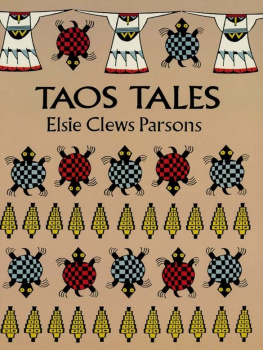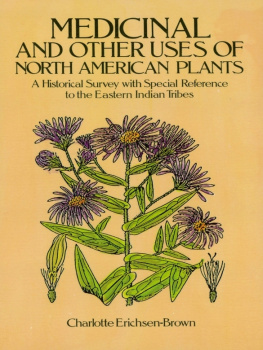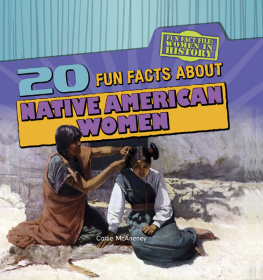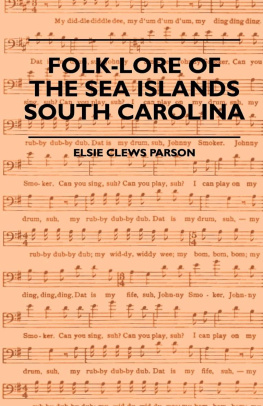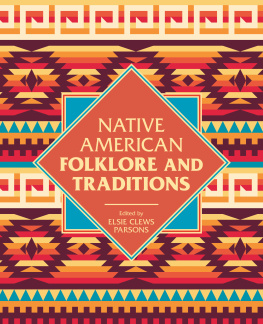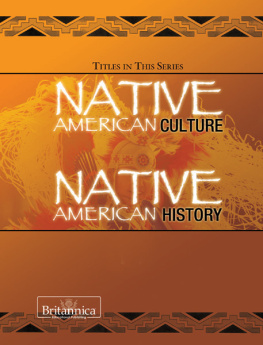DOVER BOOKS ON THE AMERICAN INDIAN
NORTH AMERICAN INDIAN LIFE, Elsie Clews Parsons. (27377-6) $10.95
LETTERS AND NOTES ON THE MANNERS, CUSTOMS AND CONDITIONS OF THE NORTH AMERICAN INDIANS, George Catlin. (22118-0, 22119-9) $17.90
GAMES OF THE NORTH AMERICAN INDIANS, Stewart Culin. (23125-9) $16.95
HANDBOOK OF AMERICAN INDIAN GAMES, Allan and Paulette Macfarlan. (24837-2) $6.95
THE MYTHS OF THE NORTH American INDIANS, Lewis Spence. (25967-6) $8.95
THE INDIANS BOOK, Natalie Curtis. (21939-9) $14.95
HOW INDIANS USE WILD PLANTS FOR FOOD, MEDICINE AND CRAFTS, Frances Densmore. (23019-8) $4.95
INDIAN BLANKETS AND THEIR MAKERS, George Wharton James. (22996-3) $9.95
HANDBOOK OF THE INDIANS OF CALIFORNIA, A.L. Kroeber. (23368-5) $18.95
PICTURE WRITING OF THE AMERICAN INDIANS, Garrick Mallery. (22842-8, 22843-6) $25.90
INDIAN BOYHOOD, Charles Eastman. (22037-0) $4.95
INDIAN SCOUT CRAFT AND LORE, Charles A. Eastman. (22995-5) $4.95
DESIGNS ON PREHISTORIC HOPI POTTERY, Jesse Fewkes. (22959-9) $8.95
INDIAN BASKETRY, George W. James. (21712-4) $6.95
AMERICAN INDIAN BASKETRY, Otis Tufton Mason. (25777-0) $16.95
INDIAN BASKET WEAVING, Navajo School of Indian Basketry. (22616-6) $4.95
HOPI KATCINAS, Jesse Walter Fewkes. (24842-9) $7.95
NAVAJO MEDICINE MAN SANDPAINTINGS, Gladys A. Reichard. (23329-4) $12.95
THE INDIAN HOW BOOK, Arthur C. Parker (Gawaso Wanneh). (21767-1) $6.95
WEAVING A NAVAJO BLANKET, Gladys A. Reichard. (22992-0) $6.95
DECORATIVE ART OF THE SOUTHWESTERN INDIANS, Dorothy Sides. (20139-2) $4.95
CAPTURED BY THE INDIANS: 15 FIRSTHAND ACCOUNTS, Frederick Drimmer. (24901-8) $7.95
INDIAN SIGN LANGUAGE, William Tomkins. (22029-X)
THE AUTOBIOGRAPHY OF A KIOWA APACHE INDIAN, Charles S. Brant (ed.) (26862-4) $5.95
THE PUEBLO POTTER, Ruth Bunzel. (22875-4) $7.95
AN OUTLINE DICTIONARY OF MAYA GLYPHS, William Gates. (23618-8) $6.95
THE MEXICAN KICKAPOO INDIANS, Felipe A. Latorre and Dolores L. Latorre. (26742-3) $11.95
ALGONQUIN LEGENDS, Charles G. Leland. (26944-2) $8.95
THE GHOST-DANCE RELIGION AND WOUNDED KNEE, James Mooney. (26759-8) $12.95
THE INDIAN JOURNALS 1859-62, Lewis Henry Morgan. (27599-X) $10.95
AN INTRODUCTION TO THE STUDY OF THE MAYA HIEROGLYPHS, Sylvanus Griswold Morley. (23108-9) $8.95
SANDPAINTINGS OF THE NAVAJO SHOOTING CHANT, Franc J. Newcomb & Gladys Reichard. (23141-0) $11.95
NAVAJO INDIAN MYTHS, Aileen OBryan. (27592-2) $5.95
THE AUTOBIOGRAPHY OF A WINNEBAGO INDIAN, Paul Radin. (20096-5) $3.95
Two LITTLE SAVAGES, Ernest Thompson Seton. (20985-7)$ 6.95
YUMAN TRIBES OF GILA RIVER, Leslie Spier. (23611-0) $8.95
YUCATAN BEFORE AND AFTER THE CONQUEST, Diego de Landa. (23622-6) $5.95
Paperbound unless otherwise indicated. Prices subject to change without notice. Available at your book dealer or write for free catalogues to Dept. 23, Dover Publications, Inc., 31 East 2nd Street, Mineola, N.Y. 11501. Please indicate field of interest. Each year Dover publishes over 200 books on fine art, music, crafts and needlework, antiques, languages, literature, childrens books, chess, cookery, nature, anthropology, science, mathematics, and other areas.
Manufactured in the U.S.A .
Published in Canada by General Publishing Company, Ltd., 30 Lesmill Road, Don Mills, Toronto, Ontario.
Published in the United Kingdom by Constable and Company, Ltd., 3 The Lanchesters, 162164 Fulham Palace Road, London W6 9ER.
This Dover edition, first published in 1992, is an unabridged republication of the work originally published under the title American Indian Life by Several of Its Students by B. W. Huebsch, Inc., New York, in 1922. Those plates originally in color have been converted to black and white for the present edition.
Manufactured in the United States of America
Dover Publications, Inc., 31 East 2nd Street, Mineola, N.Y. 11501
Library of Congress Cataloging-in-Publication Data
North American Indian life : customs and traditions of 23 tribes / edited by Elsie Clews Parsons ; illustrated by C. Grant La Farge.
p. cm.
Originally published: New York : B.W. Huebsch, 1922.
9780486148137
1. Indians of North AmericaSocial life and customs. 2. Indians of MexicoSocial life and customs. I. Parsons, Elsie Worthington Clews. E98.S7N63 1992
972.00497dc20
92-22904
CIP
Preface
SHE always says she will come, and sometimes she comes and sometimes she doesnt come. I was so surprised when I first came out here to find that Indians were like that, the wife of the Presbyterian Missionary in an Indian town in New Mexico was speaking, as you readily infer, on her servant question.
Where did you get your impressions of Indians before you came here?
From Fenimore Cooper. I used to take his books out, one right after the other from the library at New Canaan, Connecticut, where I grew up.
At that time, during the youth of this New Englander past middle age, few anthropological monographs on Indian tribes had been written, but it is doubtful if such publications are to be found in New England village libraries even to-day, and it is more than doubtful that if they were in the libraries anybody would read them; anthropologists themselves have been known not to read them. Between these forbidding monographs and the legends of Fenimore Cooper, what is there then to read for a girl who is going to spend her life among Indians or, in fact, for anyone who just wants to know more about Indians?
From these considerations, among others, this book was conceived. The idea of writing about the life of the Indian for the General Reader is not novel, to be sure, to anthropologists. Appearances to the contrary, anthropologists have no wish to keep their science or any part of it esoteric. They are too well aware, for one thing, that facilities for the pursuit of anthropology are dependent more or less on popular interest, and that only too often tribal cultures have disappeared in America as elsewhere before people became interested enough in them to learn about them.
Nevertheless, the cost of becoming popular may appear excessive not only to the student who begrudges the time and energy that must be drawn from scientific work, but to the scientist who is asked to popularize his study in terms repugnant to his sense of truth or propriety. Hitherto, American publishers appear to have proposed only to bring Fenimore Cooper up to date, merely to add to the over-abundant lore of the white man about the Indian.
In this book the white mans traditions about Indians have been disregarded. That the writers have not read other traditions from their own culture into the culture they are describing is less certain. Try as we may, and it must be confessed that many of us do not try very hard, few, if any of us, succeed, in describing another culture, of ridding ourselves of our own cultural bias or habits of mind. Much of our anthropological work, to quote from a letter from Spinden, is not so much definitive science as it is a cultural trait of ourselves.


